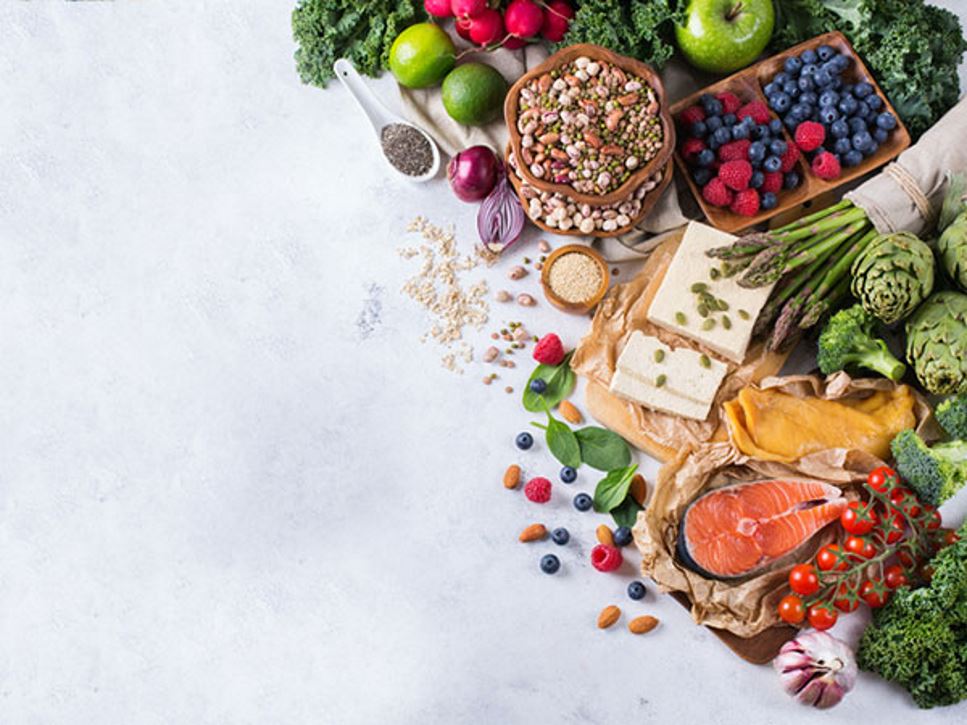Did you know there may be a link between inflammation and increased risk for chronic diseases? Some studies have found an association between chronic inflammation and conditions such as heart disease and Type 2 diabetes.
Inflammation Is a Normal Body Response to Promote Healing
Typically, we think of signs of inflammation as redness, swelling and pain. However, inflammation can be both a sign that the body is fighting infection or trying to heal from injury.
Signs of inflammation may not always be obvious, like with a respiratory condition. Other signs might be easy to see, like a wound on the skin. Whatever the cause, long-term chronic inflammation may damage the body’s DNA, increasing the risk for other chronic conditions.
Foods and Inflammation
While various anti-inflammatory diets are promoted online, researchers are still exploring how the foods we eat may affect inflammation. However, eating a variety of nutritious foods may help manage inflammation in the body by providing nutrients that help keep your immune system working well:
- Fruits and vegetables contain natural components called phytonutrients that may help protect against inflammation.
- Healthy fats that help boost brain and heart health, such as monounsaturated fats and omega-3 fatty acids, may help reduce inflammation.
Foods high in saturated fats may increase inflammation. Plus, highly processed foods and other foods with trans fat also may be inflammatory.
Are There "Anti-inflammatory Foods”?
Dark chocolate (more than 70% cocoa), red wine, green tea, turmeric and ginger are thought to help reduce inflammation. But, much of the research on anti-inflammatory effects of these foods comes from studies done with lab animals. We cannot form conclusions about how these foods impact inflammation in people at this time. And, it is not yet known how much and how often “anti-inflammatory” foods must be eaten to combat inflammation. For now, the best advice is to adopt a healthy eating style.
Five Dietary Approaches That May Help Reduce Inflammation
Step 1: Make Fruits and Vegetables Half Your Plate
- Aim to include vegetables and fruits with every meal.
- Eat a variety of brightly colored vegetables and fruits.
Step 2: Be Smart about Protein
- Five to six ounce-equivalents per day is appropriate for most people who are moderately active.
- An ounce-equivalent is equal to about 1 ounce of cooked animal-based protein like beef, poultry or fish; 1 egg; ¼ cup of cooked beans; 1 tablespoon of nut butter; or ½ ounce of nuts or seeds.
- Enjoy meatless meals with tofu, tempeh, beans, peas and lentils.
- Choose leaner protein foods, such as skinless chicken or turkey or lean cuts of beef and pork.
- Include low-fat or fat-free dairy products, like skim milk and yogurt, which are lower in saturated fat.
- Minimize highly processed foods such as deli meat, bacon and sausage.
Step3: Choose Healthy Fats
- Use monounsaturated fats, including olive, safflower, sunflower, canola, peanut and avocado oils.
- Eat omega-3 rich foods.
- Enjoy salmon or another fatty fish two to three times per week.
- Snack on nuts, such as walnuts.
- Toss ground flaxseed, chia seeds and hemp seeds into salads and other dishes.
- Minimize highly processed foods that contain partially hydrogenated oils and high amounts of saturated fat.
Step 4: Select Whole Grains
- Choose whole-grain flours and cereals more often, rather than those made with refined flour.
- Include a variety of whole grains, such as brown rice, quinoa, millet and wheat berries.
Step 5: Experiment with Fresh Herbs and Spices
- Infuse flavor into your dishes by adding fresh herbs.
- Spice up your recipes by experimenting with spices.
Other Lifestyle Factors
While what you eat is important, it's not the only factor that impacts chronic inflammation. Some healthy habits to include in your lifestyle:
- Get adequate sleep — both quality and duration of sleep impact inflammation.
- Be active — regular physical activity has anti-inflammatory effects. Aim for 30 to 60 minutes of moderate-intensity physical activity per day on most days of the week.
- Achieve and maintain a healthy weight — excess body fat may contribute to increased inflammation.
Need Help Designing an Anti-inflammatory Diet?
A registered dietitian nutritionist can help develop an eating plan that fits your unique lifestyle, taste preferences and medical needs.
References
Find a Nutrition Expert
Looking for credible nutrition information and recommendations? The Academy of Nutrition and Dietetics' network of credentialed food and nutrition practitioners are ready to help!

